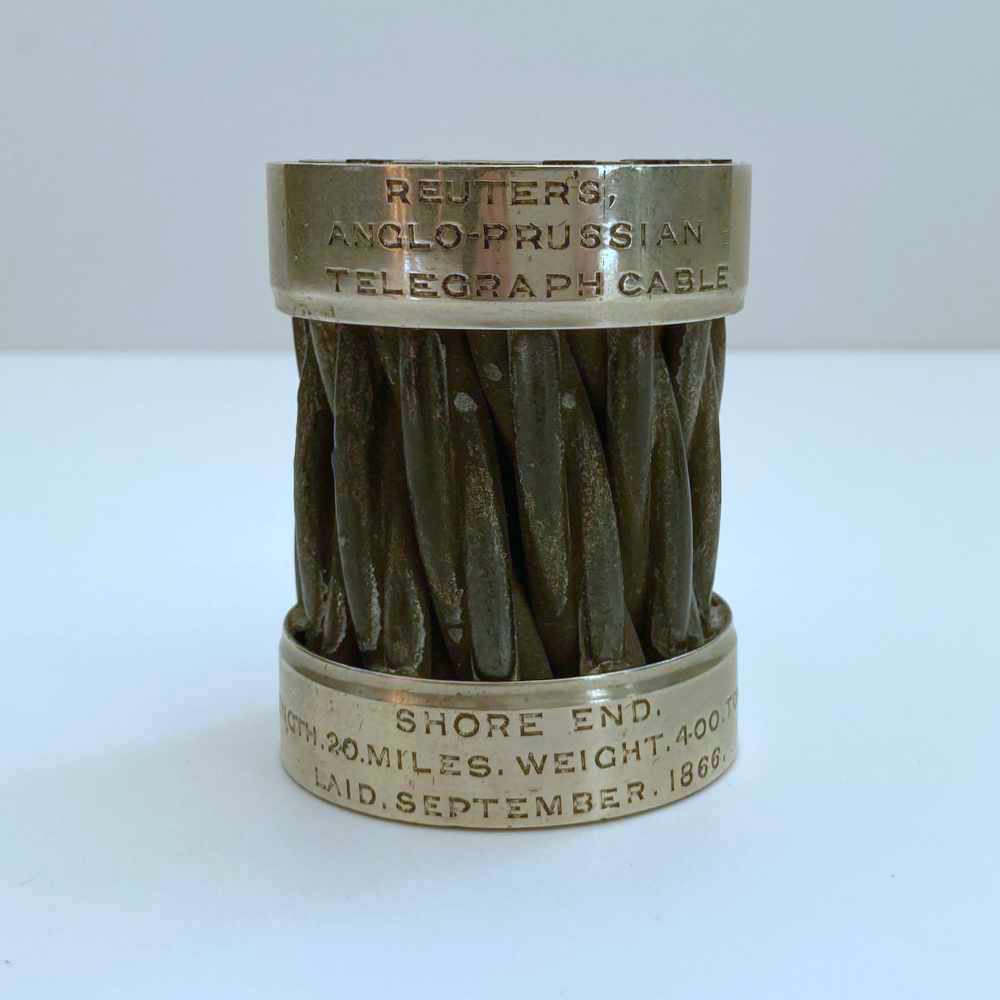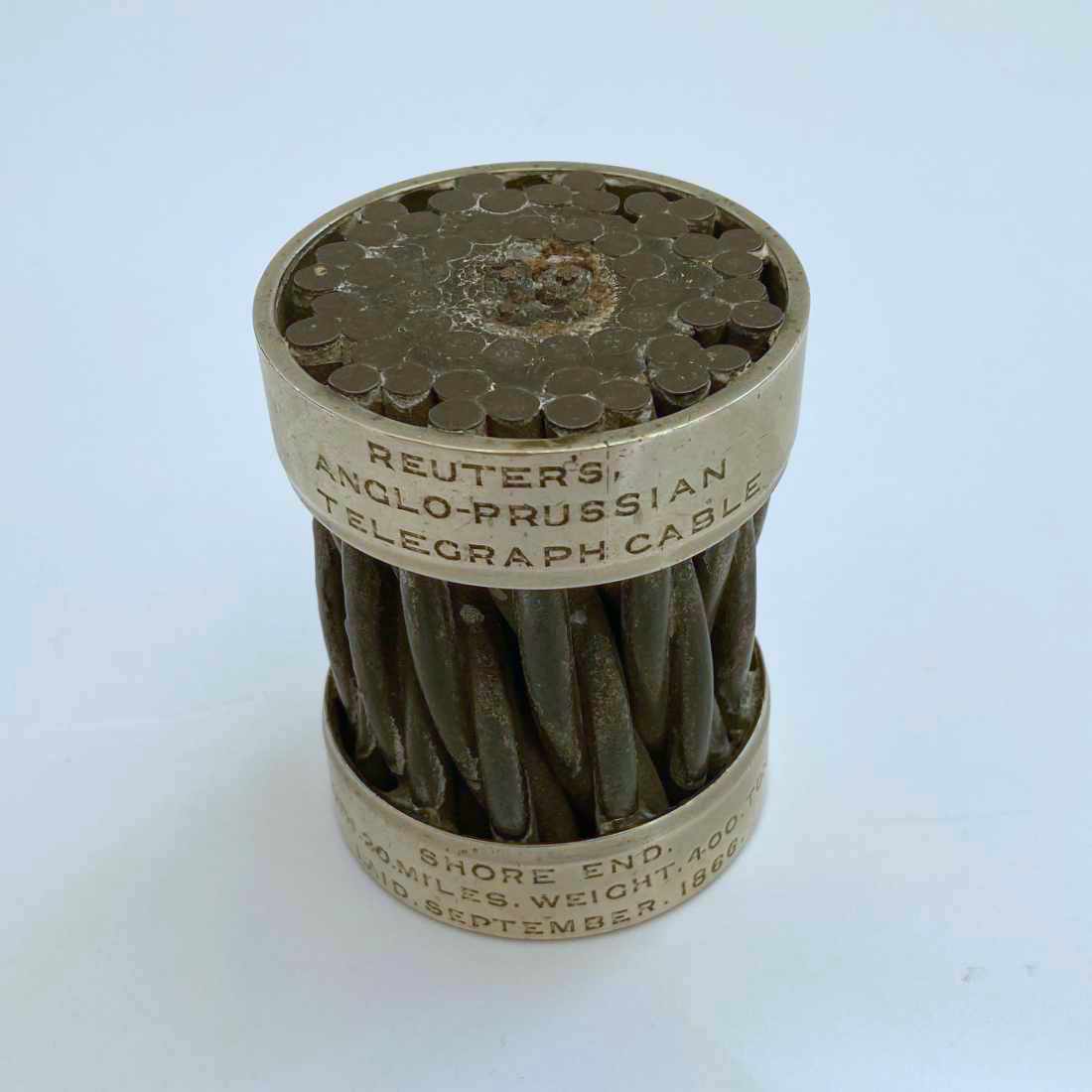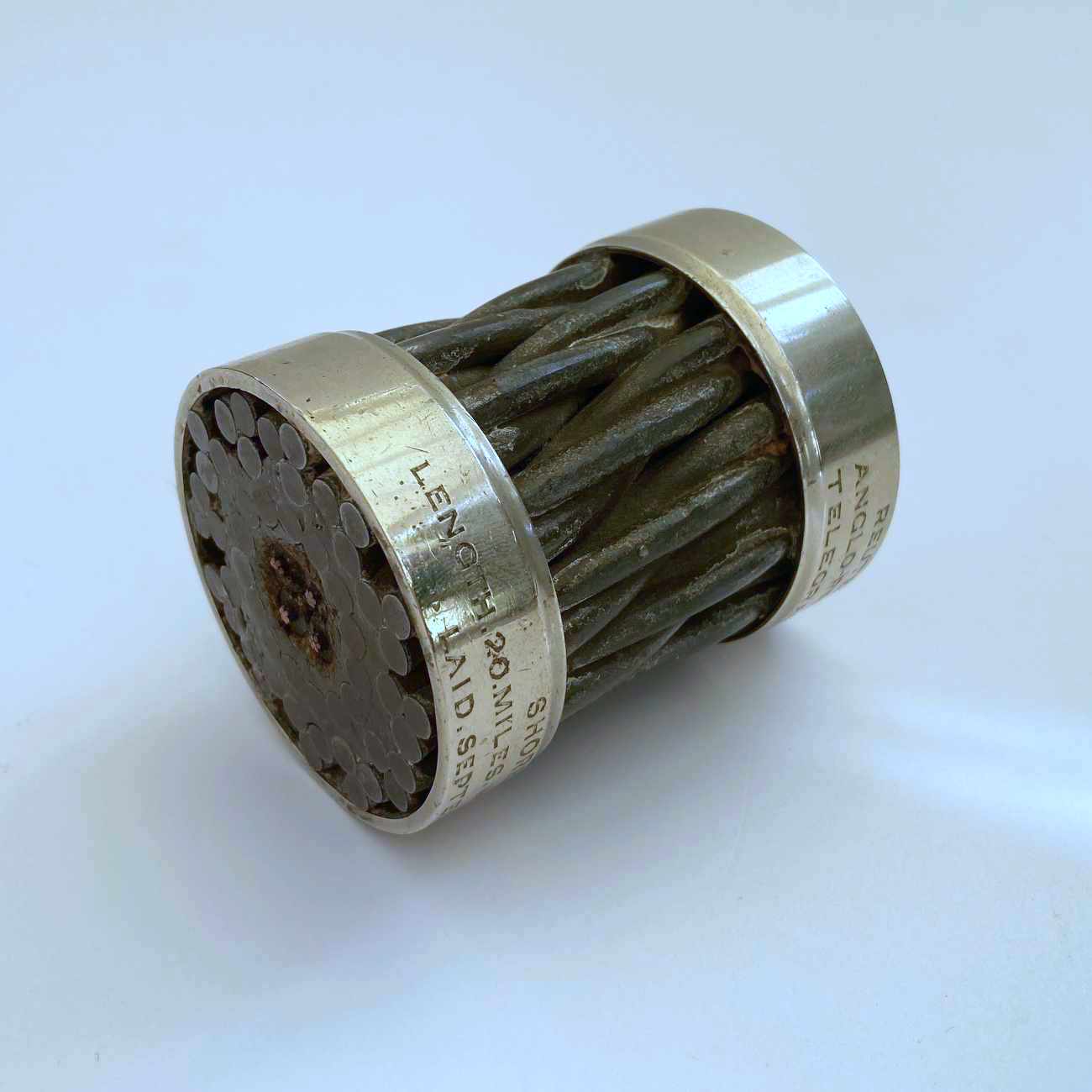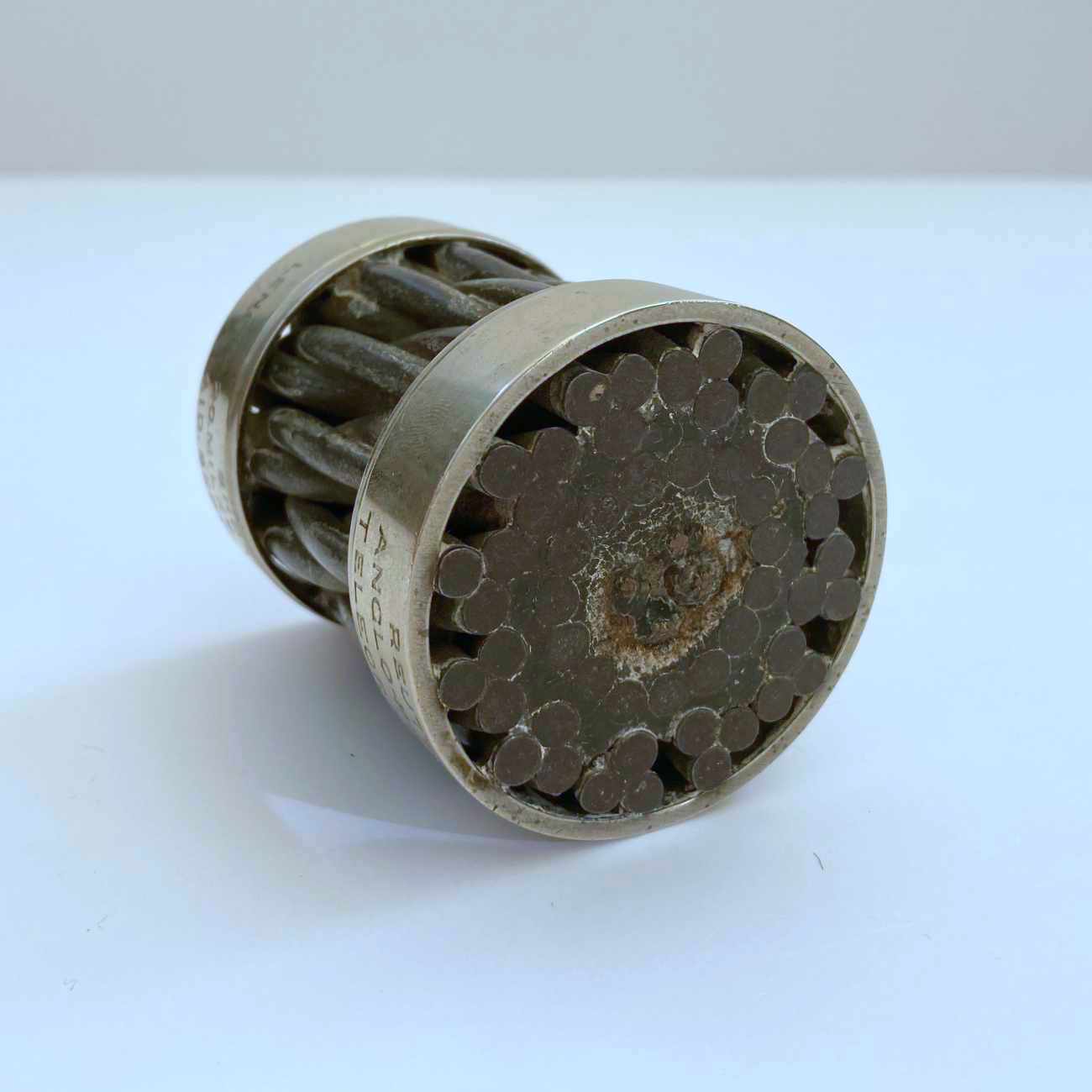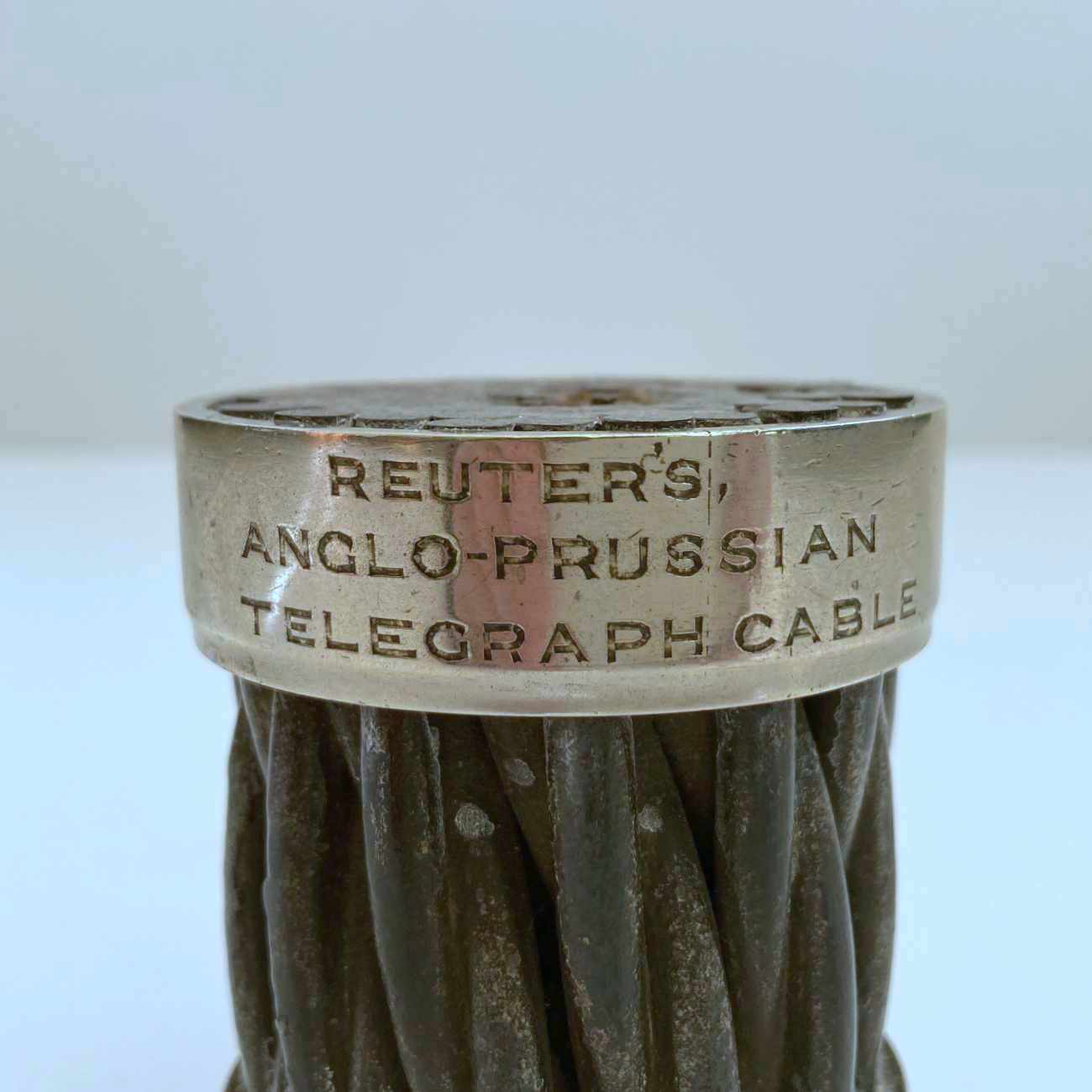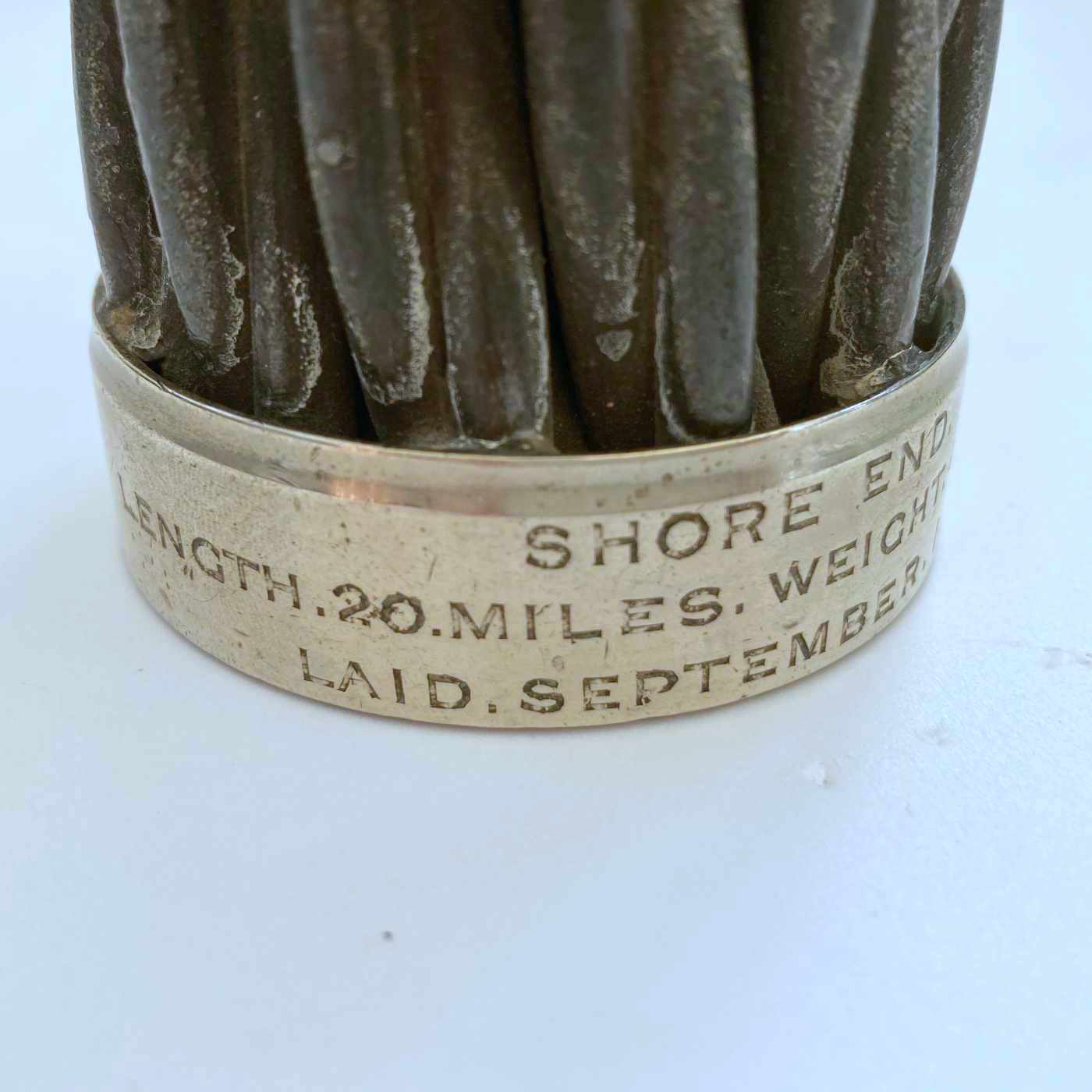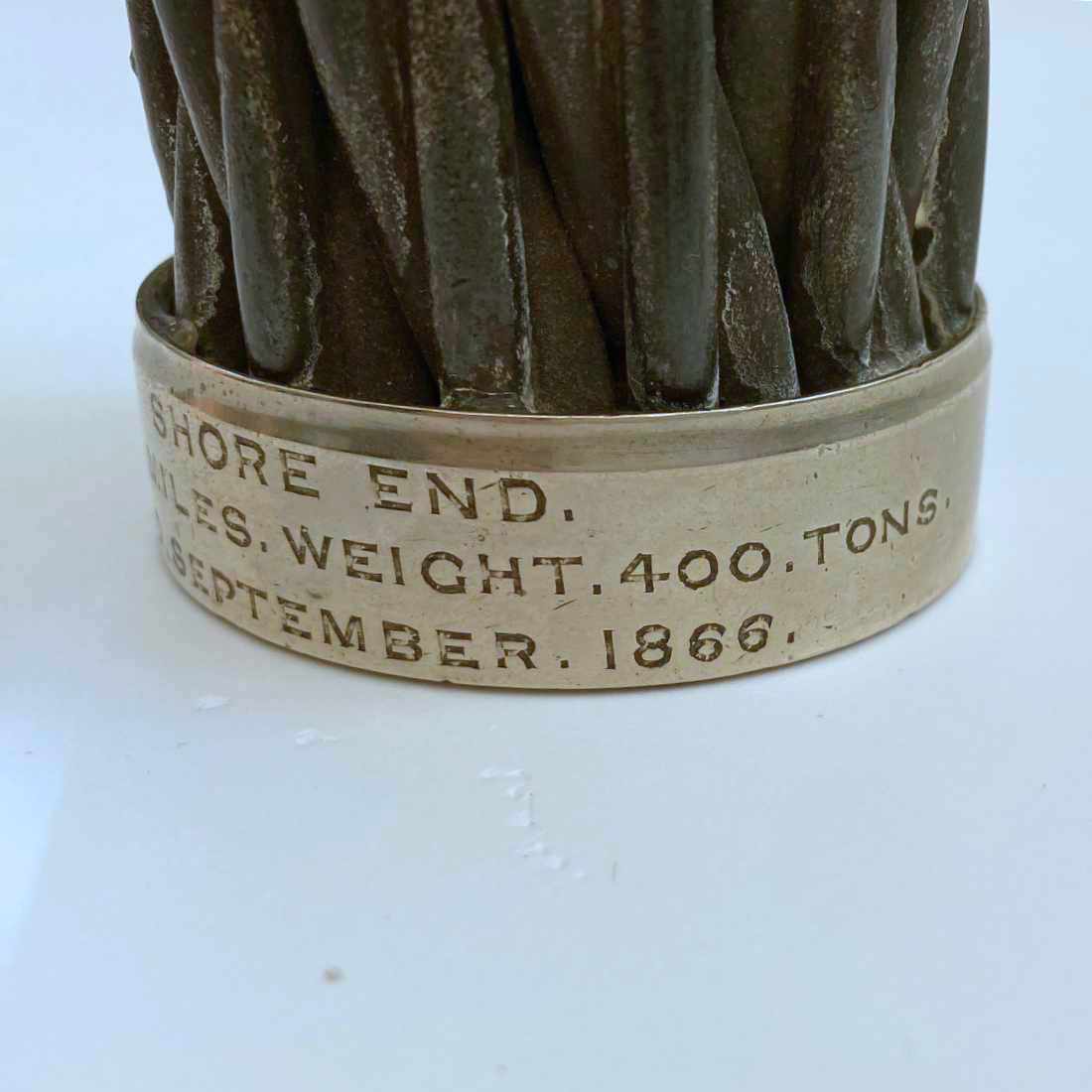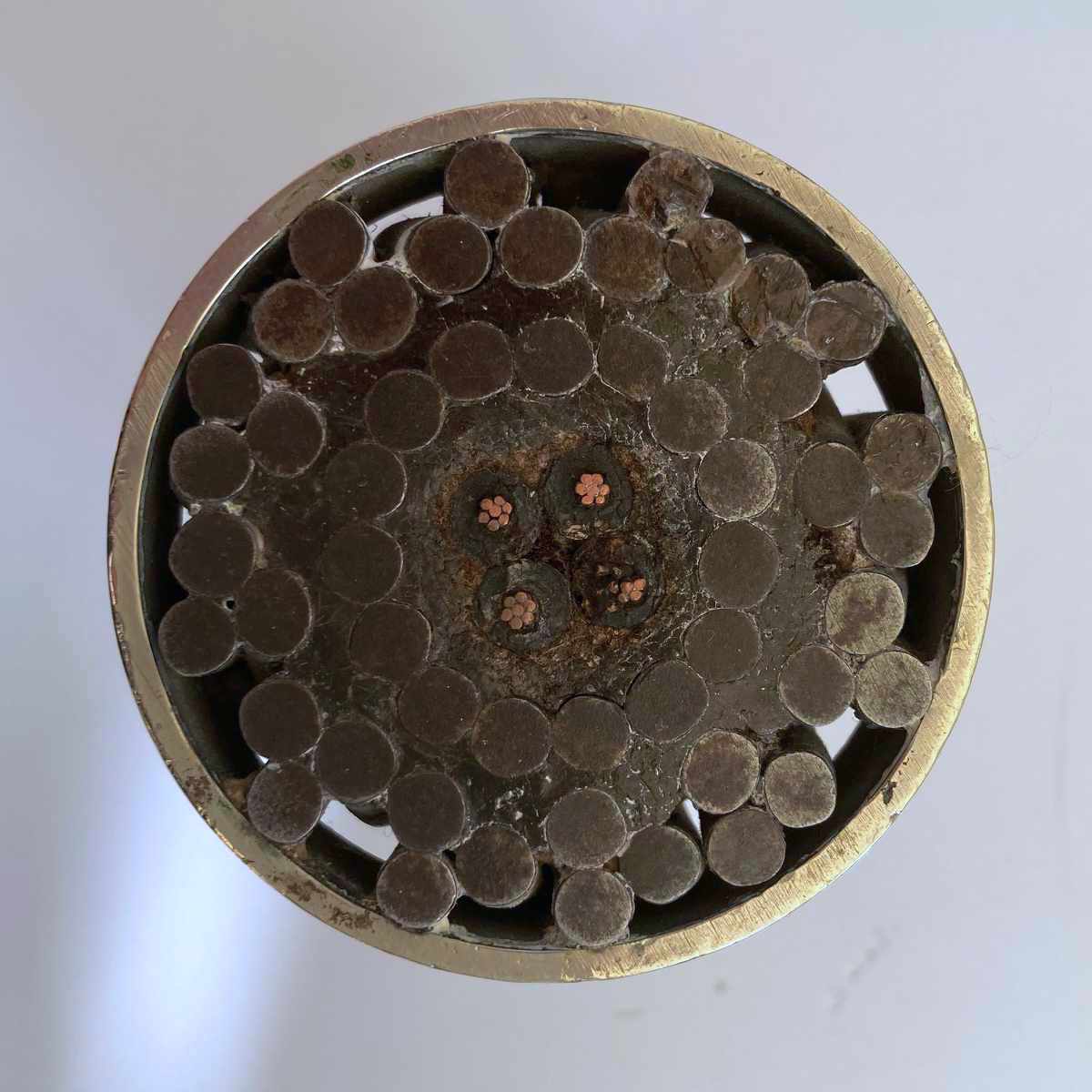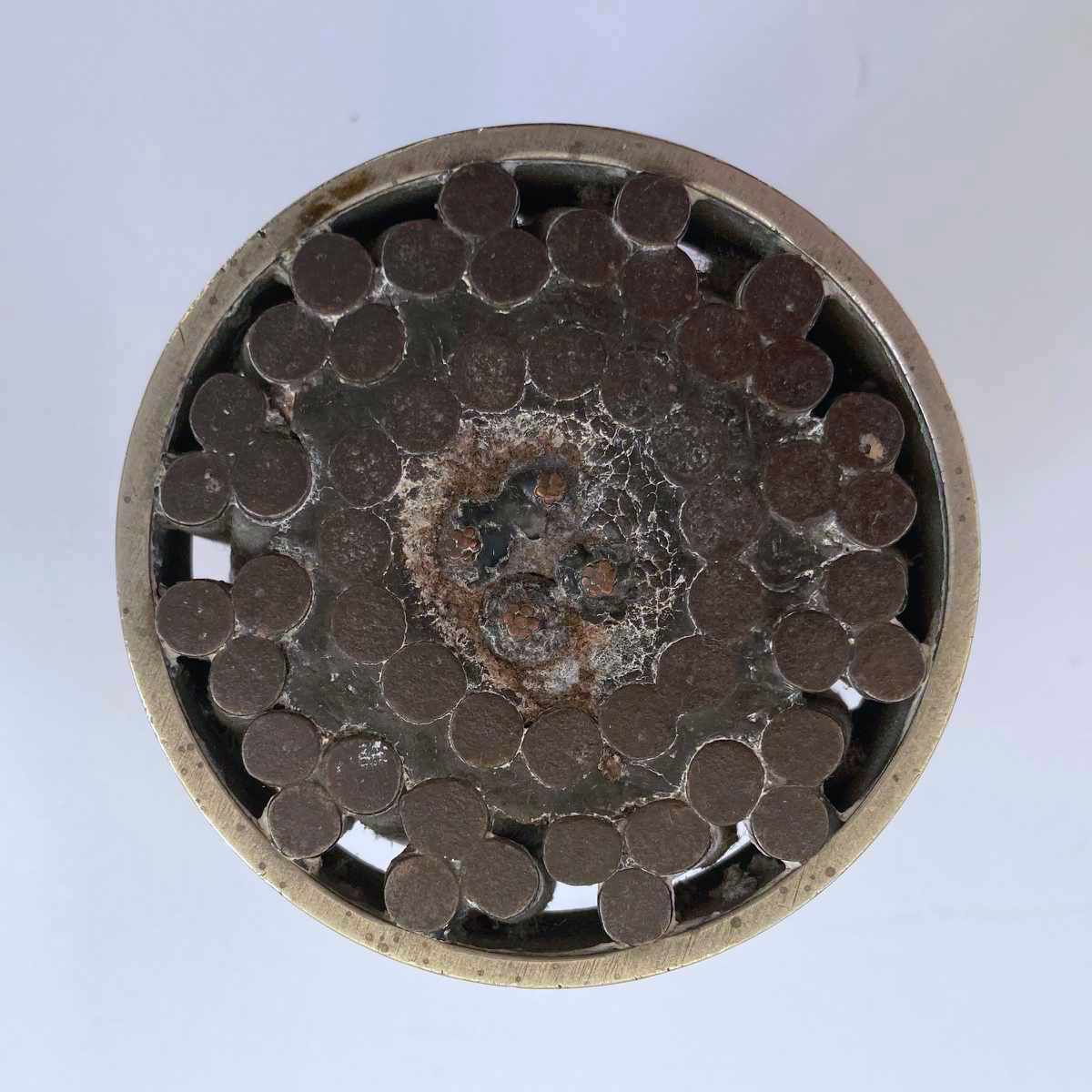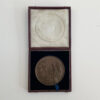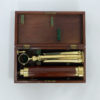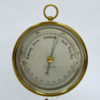Description
For sale, a very rare and large commemorative shore end section of 1866 Anglo-Prussian telegraph cable by The Reuters Telegraph Company Limited.
This museum quality piece is comprised of a four copper conductor core surrounded by gutta percha and tarred hemp. The shore end cable was also surrounded with numerous galvanised iron wires which would have been further wrapped in hemp.
A stamped ferrule or collar surrounds the tip and the base.
The tip states: “Reuters, Anglo-Prussian Telegraph Cable”
The base states: “Shore End. Length 20 miles, weight 400 tons. Laid September 1866”
The Reuters Telegraph Company Limited was formally established in 1865 by Paul Julius Reuter. Born in Germany in 1816, Reuter’s initial career was in banking but in 1847 he began a short-lived partnership with Joseph A Stargardt after the pair took over the Berlin publishing business of Johann Carl Klage. The company was involved in the publishing of radical pamphlets around the time of 1848 revolution which swept through Europe, and it is likely that this activity saw the departure of Reuter, who moved to Paris in the same year to take up a position in the news agency of Charles-Louis Havas.
Shortly after, Reuter set up his own news agency in Aachen on Germany’s western border with Belgium and the Netherlands and began utilising pigeons to carry news and financial stock exchange updates from all surrounding countries. With such a central location between four different European nations, he was able to carry and transmit news to all capitals much faster than all other means of transport.
With the rise of telegraphy and the building of a telegraphic link between the UK and the continent (Dover to Calais), Reuter saw an opportunity and moved to London, setting up the Reuter Telegraphen Bureau at the Royal Exchange, London in 1851. This shrewd move allowed Reuter to carry financial news from London to the Continent and using already established relationships, the same in reverse at the quickest rates then possible. This ability soon saw numerous London newspapers subscribing to Reuter’s services and his business empire grew exponentially thereafter.
In the early 1860’s Reuter also established a telegraph station in Crookhaven, Ireland which linked directly to London. This successfully operated for a few short years by having ships returning from the US, jettisoning canisters containing the latest US news into the sea which were duly collected by Reuter and the information contained immediately passed back to London quicker than any other means available at the time. The success of the 1866 Transatlantic cable eventually surpassed this service but it provides good insight into Reuter’s extraordinary business acumen.
In the year prior to the eventual success of the Transatlantic cable (1866), Reuter finally established the Reuters Telegraph Company Ltd to raise funds for the commissioning of a new telegraph cable connecting England to Germany. This Anglo-Prussian telegraph, (the subject of this interesting object) would have allowed the company to communicate with Germany without having to channel communications through the established link from Dover to Calais. This move would presumably have allowed Reuter greater control of the flow of information and not to mention the speed with which it could be conveyed. In October of 1866, The Times reported the success of this new endeavour which ran from Lowestoft to Nordeney and was laid by the CS William Cory which had also been involved in laying the Transatlantic cable.
It is likely that the establishment of this new connection led in 1870 to the formation of the news cartel between Reuter, Havas (Reuter’s old French agency) and the German agency, Wolff. This “Ring” as it was dubbed, hived off territories for each agency but Reuter was clearly the dominant partner throughout, due to the territories under his control. In the same year, the Anglo-Prussian telegraph cable was taken over by the General Post Office (GPO) giving Reuter a large financial gain, and this line later enabled the first leg of communication of what would later become the Indo-European Telegraph line which travelled to Bombay and was eventually extended to Suez.
Although certainly less well known than its Transatlantic counterpart of the same year, this example is a much rarer example of a cable that arguably had a similar importance in the extension of telegraphic traffic across the world. It is both an interesting artefact which documents the rise of the Reuter’s new agency which still exists to this day and a rare example of a commemorative cable sample which documents the British Empire’s endeavours to connect its overseas territories at that time. I can find no other extant example of this sample.
Dated 1866.


